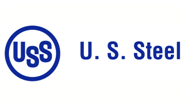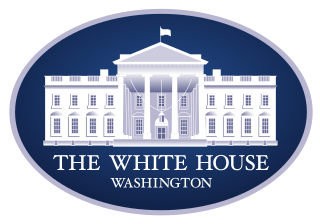Steel Mills

U.S. Steel’s Fruehauf Touts Steel as Key to Clean Energy Transition
Written by Laura Miller
September 14, 2023
While steel may be part of the problem when it comes to carbon emissions, it will also play a crucial part in the world’s transition to clean energy.
This is according to Richard Fruehauf, chief of strategy and sustainability officer at U.S. Steel, who spoke on Tuesday morning at the Reuters Industry Transition 2023 conference.

“Steel is really important to a clean energy transition,” Fruehauf stated during the opening keynote address.
The event was held at the Sheraton Station Square just across the Monongahela River from U.S. Steel’s headquarters in Pittsburgh. Companies from a range of industries were in attendance, as were suppliers, banks, government agencies, and institutions. All share the goal of igniting collective decarbonization in hard-to-abate sectors.
Fruehauf touted U.S. Steel’s Big River Steel mill in Osceola, Ark., and its use of electric-arc furnace (EAF) steelmaking as helping the company achieve its goal of net zero carbon emissions by 2050. By utilizing EAF technology, “We can get to a very low emission steel footprint … in a way that is supportive of our business goals,” he noted.
A significant theme throughout day one of the conference was the critical role of collaborative partnerships in industry’s transition to a greener future.
Fruehauf said U.S. Steel has partnerships across the supply chain. In Arkansas, energy provider Entergy will supply the Big River Steel mega-mill with energy from its solar field right next to/on the steelmaking campus, he said. And Big River is set to become Entergy’s largest electricity consumer once its two new EAFs come online.
The use of renewable solar and nuclear energy will be pivotal in decarbonizing, he said.
Its relationship with General Motors is another vital partnership for U.S. Steel. As automakers work to lower carbon emissions in vehicles, “they come talk to steel companies first,” Fruehauf said, showing the continuing importance of steel in automaking. The steelmaker announced earlier this year it will be providing GM with its line of VerdeX® sustainable steels made at Big River.
U.S. Steel is forging other collaborative partnerships in developing new technologies to capture off-gases. The development of regional hydrogen hubs is another important synergistic collaboration.
Fruehauf pointed out that $8 billion from the US government’s infrastructure bill is slated specifically for the buildout of these hubs.
He also noted that the Inflation Reduction Act’s (IRA) industrial decarbonization program has given the US government the power to provide grants (instead of just low-interest loans as has been done before).
These programs may not be the “magic bullet,” but they will “accelerate a lot of changes you’re seeing in US industry,” he said.
Fruehauf noted the cost-effectiveness and availability of hydrogen and electricity when asked about the challenges and hurdles for steel in the new decarbonized economy. The electricity transmission grid also needs to be further developed.
Along this same line, electrification is a significant part of the world’s transition to cleaner energy, he said, especially in transportation. And steel will play a major role in that, as motors and electric vehicles (EVs) need specialty electrical steels.
U.S. Steel will supply up to 200,000 tons of its Indux steel annually from its new non-grain oriented (NGO) electrical steel line at Big River. The line will come online in the current quarter but will not reach a full run rate until next year.
U.S. Steel has deliberately planned its roadmap for achieving net-zero emissions by 2050. Fruehauf said that the company is actively watching and staying engaged with the development of new technologies to help it reduce its carbon footprint even further. He noted that the “next big chunk will come from the maturation of technologies available today.”
With its infinite recyclability, steel has a huge opportunity to drive the circular economy, Fruehauf said.
“Circularity is important to [the clean energy] transition, to our strategy, to our move towards more EAF production,” he noted.
U.S. Steel is not concerned about a potential scrap shortage “because we have substitutes,” Fruehauf said.

Laura Miller
Read more from Laura MillerLatest in Steel Mills

POSCO inks MoU with Hyundai on Louisiana EAF mill
POSCO has signed a Memorandum of Understanding (MoU) with Hyundai Motor Group that includes an equity investment in Hyundai’s previously announced EAF mill set to be built in Louisiana.

CRU: Tata Steel looks to shed 1,600 jobs in the Netherlands
The company said, “The challenging demand conditions in Europe driven by geopolitical developments, trade and supply chain disruptions and escalating energy costs have affected the operating costs and financial performance."

Reports: Federal funding for Cliffs’ project could be slashed
Elon Musk's DOGE is determining which Department of Energy grants to advance and which ones to terminate, according to several media outlets

Trump still against selling USS to Japanese firm: Report
Despite ordering a new review of Nippon Steel’s bid for U.S. Steel, President Trump said he is still against selling USS to a Japanese company, according to media reports.

Algoma looks to sell more steel in Canada in wake of Trump’s tariffs
The Canadian steelmaker said its absorbing higher tariffs as it moves forward.
